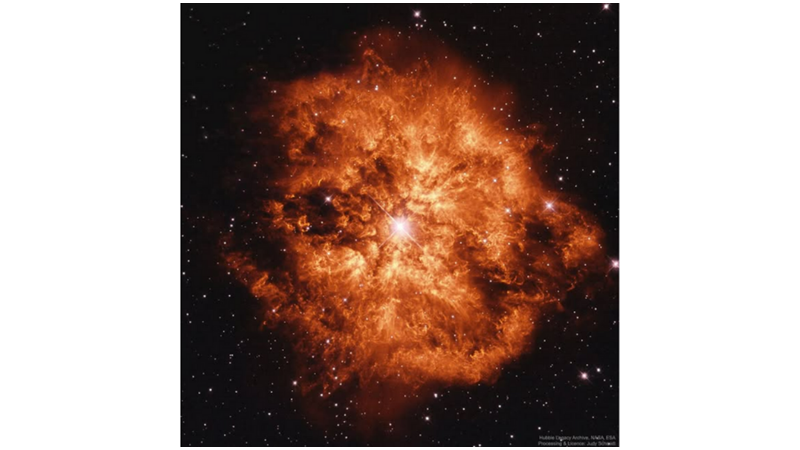Some stars can explode in slow motion and disappear. Rare, massive Wolf-Rayet stars are so hot and active that they slowly disintegrate in front of our telescopes over time. In the process, the resulting huge, glowing clouds of gas - each about 30 times the size of Earth - are blown into space by violent stellar winds. At the center of the image, WR 124, a Wolf-Rayet star about six light-years across, can be seen forming a nebula called M1-67 around it. Scientists are still investigating why WR 124 has been gradually disintegrating over the last 20,000 years. Located about 15,000 light-years from us in the constellation of the Arrow (Lat: “Sagitta”), this star is undergoing an extraordinary transformation. While how Wolf-Rayet stars end up usually depends on their mass, most are thought to be destroyed by powerful explosions such as supernovae or gamma-ray bursts (GIPs).
February 3, 2025 Astronomy Photo of the Day (NASA APOD)
Image Source: Hubble Legacy Archive, NASA, ESA; Processing & License: Judy Schmidt


 Nielawore
Nielawore









Yorumlar
nice
Yorum yazmak için lütfen giriş yapınız